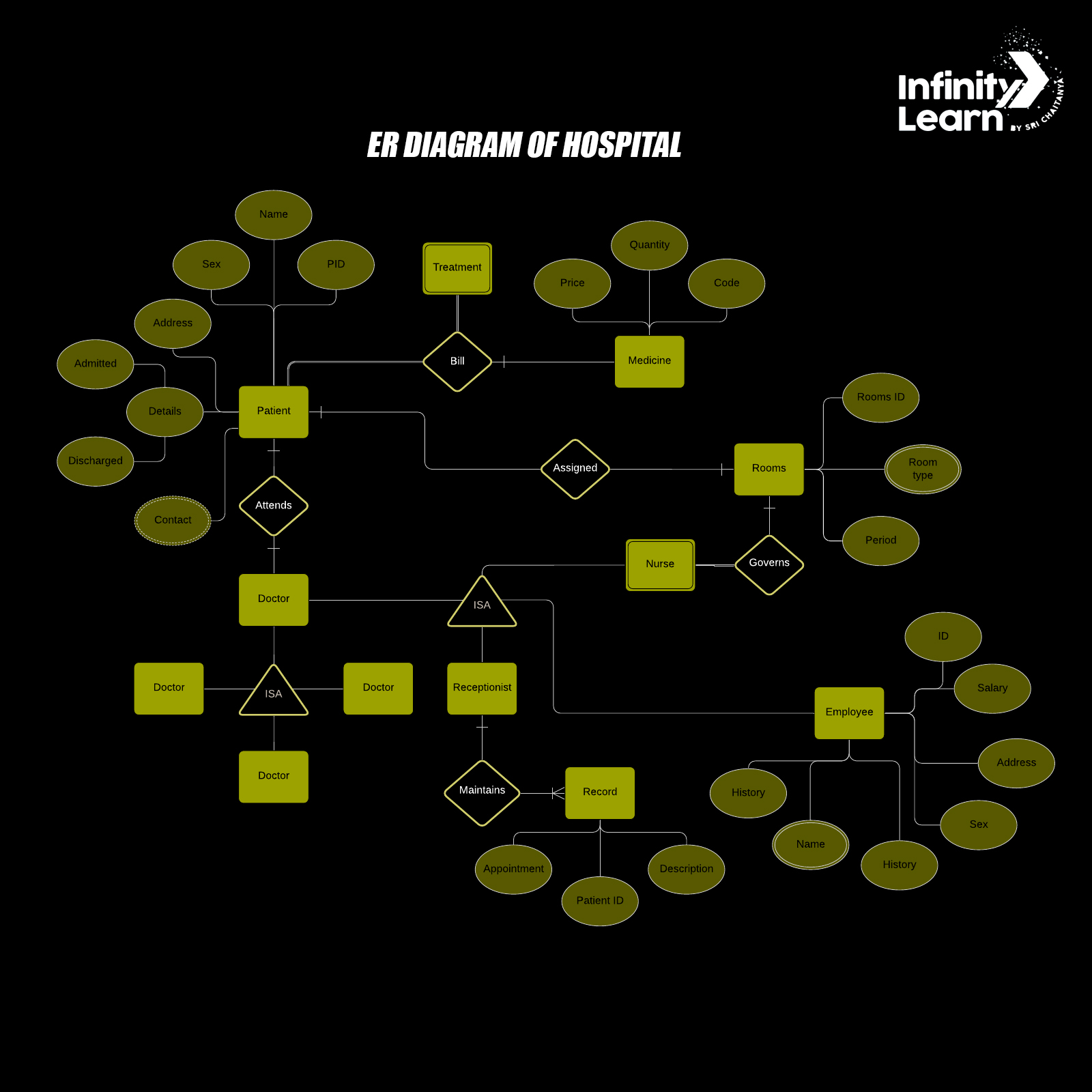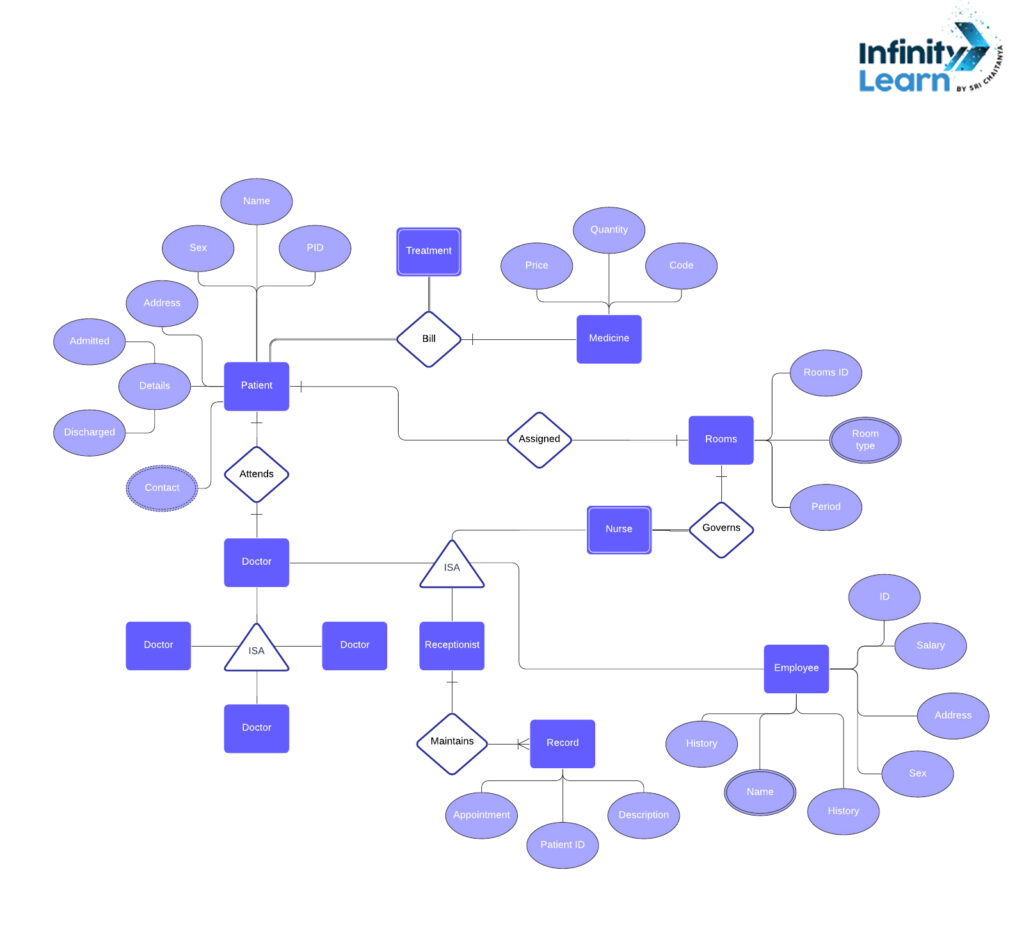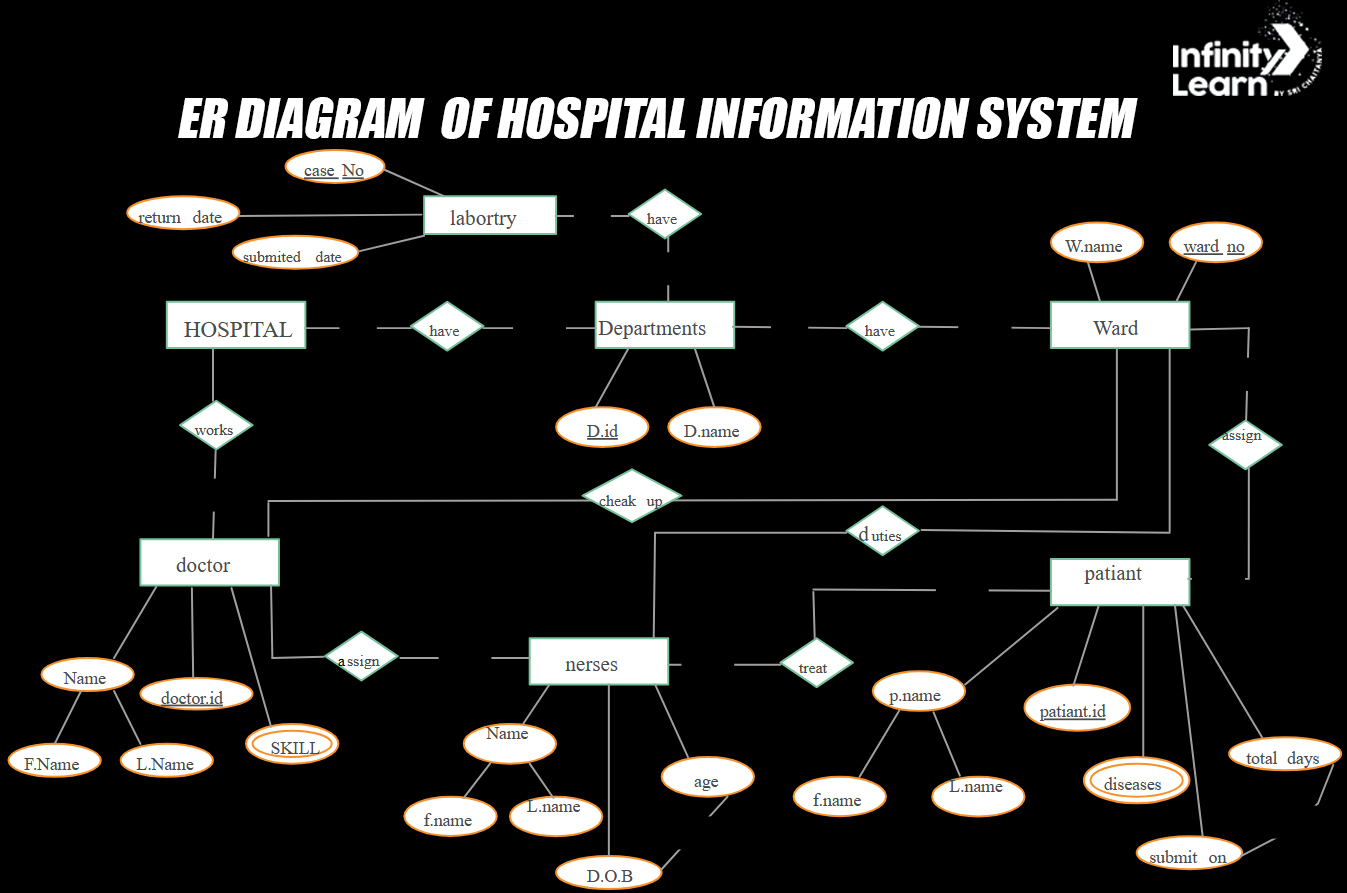
Courses

By Shailendra Singh
|
Updated on 15 Jan 2025, 11:50 IST
Hospitals are important for our society, so it’s crucial they’re well-managed. Planning ahead is key to setting up a good system. Even after it’s in place, having a database to track everything happening in the hospital is important. To create this database, we can use Entity-Relationship diagrams. They help design a detailed and well-planned system

Hospitals need good management to work well. A hospital management system helps with this by organizing health care information and making sure tasks get done efficiently. People use ER diagrams to plan their hospital management systems. These diagrams show all the tables in the database and how different things are connected. Let’s look at some examples of ER diagrams for hospital management systems to understand them better.
Examples List



Typically, an ER diagram aims to solve problems. Each ER diagram is unique because it addresses different needs. Here are some issues encountered when creating a hospital management system:

Typically, an ER diagram aims to solve problems. Each ER diagram is unique because it addresses different needs. Here are some issues encountered when creating a hospital management system:

ER diagrams are necessary to visualize the structure of databases, making it easier to understand how different entities relate to each other.
In a hospital's entity relationship, patients, doctors, and appointments are common entities, with relationships like 'patient visits doctor' and 'doctor schedules appointment.'
Common mistakes in ER diagrams include missing entities or relationships, redundant relationships, and unclear cardinality.
A good ER diagram is clear, concise, and accurately represents the relationships between entities in a database.
The purpose of an ERD diagram is to visually represent the data model and its relationships in a database system.
ER diagrams help database designers and stakeholders understand the structure of a database, facilitating better communication and design decisions.
ER diagram symbols include entities represented by rectangles, relationships represented by diamonds, and attributes represented by ovals.
ER symbols include entities, relationships, and attributes, each represented by specific shapes in ER diagrams.
An ER diagram, short for Entity-Relationship diagram, illustrates the logical structure of databases, showing how entities relate to each other.